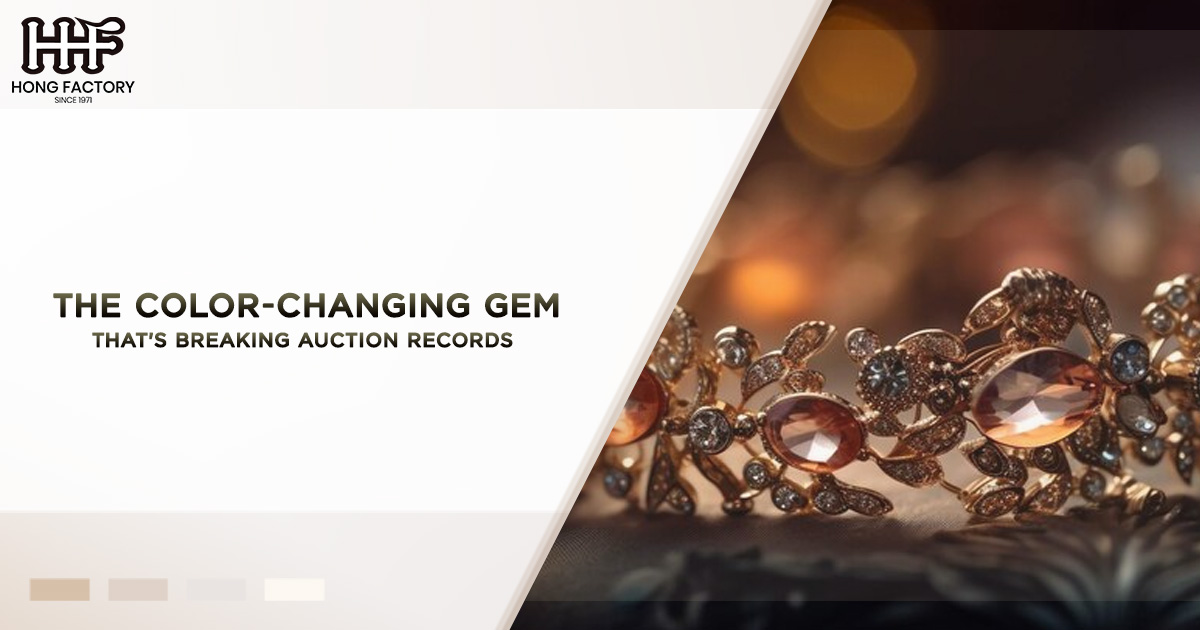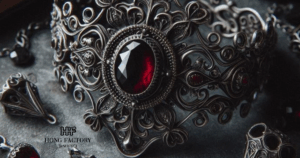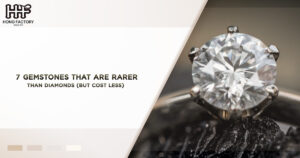In the world of gemstones, few treasures capture the imagination quite like the mesmerizing alexandrite. Known for its stunning ability to change color under different lighting conditions, this rare gem has become a symbol of both natural wonder and coveted luxury. As auctions continue to shatter records with these jewels, alexandrite is cementing its place as one of the most remarkable and sought-after investment stones.
This article will delve into why alexandrite has become the gemstone of choice for collectors, its fascinating characteristics, and its growing reputation as a stable and highly valuable asset. If you’re curious about rare gems, are considering diversifying your investment portfolio, or simply want to marvel at nature’s artistry, continue reading for a comprehensive look at what makes alexandrite so extraordinary.
Alexandrite – A Rare Gem With a Magical Twist
One of the rarest stones found on Earth, alexandrite belongs to the chrysoberyl mineral family and is distinguished by its extraordinary color-change effect, known scientifically as the “alexandrite effect.” By daylight or fluorescent light, this gem typically appears green or bluish-green, but under incandescent light, it shifts to shades of red, purple-red, or raspberry. This dramatic transformation has earned alexandrite the nickname “emerald by day, ruby by night.”
Such a phenomenon occurs due to the presence of trace amounts of chromium, which interact with light to create this unique optical effect. Few other gemstones in the world display this dramatic color change, making alexandrite a near-mythical specimen among rare gems.
Moreover, gem-quality alexandrite is incredibly scarce. Most of the finest specimens originate from the Ural Mountains of Russia, where the gemstone was first discovered in the 1830s. Although deposits have since been found in Brazil, Sri Lanka, and East Africa, the quality and size of Russian alexandrite remain unmatched.
The Rising Popularity of Alexandrite at Auctions
In recent years, alexandrite has been breaking records at high-profile auctions, signaling a surge in its desirability and value. Its rarity and color-changing properties make it a unique contender in the world of collectible investment stones. In fact, auction houses like Sotheby’s and Christie’s have reported unprecedented interest in alexandrite, with some pieces fetching prices upwards of $100,000 per carat.
One notable sale occurred in 2021, when a 17.08-carat alexandrite ring sold for a staggering $1.1 million at Sotheby’s. The exceptional size, clarity, and vibrant color of the gemstone made it an unparalleled specimen and a testament to its investment potential.
The gemstone’s appeal is not limited to collectors—its cultural and symbolic connotations also contribute to its allure. Named after Tsar Alexander II of Russia, alexandrite is often associated with prosperity and good fortune. It is also one of the traditional birthstones for June, further increasing its desirability among buyers seeking a rare and meaningful piece of jewelry.
Alexandrite as an Investment Stone
Beyond its aesthetic appeal, alexandrite is earning a reputation as a sound investment stone. In an unpredictable global economy, many investors are turning to rare gems as a way to diversify their portfolios. Like gold or fine art, gemstones such as alexandrite hold intrinsic value and are unaffected by market fluctuations.
Several factors make alexandrite a particularly attractive investment
- Rarity – True gem-quality alexandrite is one of the rarest stones in existence, with supply diminishing rapidly. As new finds become scarce, the stone’s value is expected to continue rising.
- Unmatched Beauty – The color-changing effect of alexandrite is unique and cannot be replicated, adding to its mystique and demand.
- Portability – Unlike other high-value assets, such as real estate, gemstones are tangible, portable, and can be transported or stored discreetly.
- Historical Provenance – Russian alexandrites linked to the Ural deposits are not only gemstones but also precious historical artifacts, which further drive their premium value.
For those considering an investment, it’s essential to purchase high-quality pieces from reputable sources. Fine alexandrite should exhibit a clear and dramatic color shift, excellent transparency, and minimal inclusions. Larger carat sizes are also more valuable, although even small stones can fetch significant prices if they possess exceptional qualities.
How Alexandrite Stands Out Among Rare Gems
The rarity of alexandrite is magnified when compared to other rare gems such as diamonds, rubies, and sapphires. While these stones are undoubtedly prized, their deposits and availability are far more abundant than that of alexandrite. For example, new diamond mines are frequently discovered, while alexandrite appears in only a handful of locations worldwide.
Additionally, alexandrite’s ability to change color sets it apart from other gemstones. Where most gems rely on their brilliance or single-color spectrum, alexandrite offers a dynamic display that changes with its environment—a feature that appeals to collectors seeking something truly unique.
Tips for Buying Alexandrite
If you’re intrigued by the beauty and investment potential of alexandrite, here are some practical tips to guide your purchase
- Focus on Quality Over Size – While larger stones are rare and valuable, the intensity of the color change and clarity often outweigh carat size. A smaller, high-quality alexandrite is a better investment than a larger, lower-quality stone.
- Check the Origin – If possible, look for stones mined from the Ural Mountains, as these are deemed the finest examples of alexandrite. However, gems from Brazil and Sri Lanka also offer excellent quality.
- Examine the Color Change – The most desirable alexandrites exhibit a complete and vivid transition between green and red hues under varying lighting conditions. Stones with a weak or partial color change are less valuable.
- Work With Experts – Consult with gemologists and trusted dealers who can provide certification for the authenticity and quality of the stone.
- Consider Unique Settings – Alexandrite is often set in luxurious and intricate designs, such as vintage or estate jewelry, which can enhance its overall appeal and value.
Alexandrite – A Timeless Treasure
The renewed focus on spectacular color-changing gemstones, including alexandrite, highlights our enduring fascination with nature’s most exquisite creations. Whether admired for its beauty, rarity, or investment potential, alexandrite truly stands in a league of its own. It’s no wonder this gemstone is breaking auction records and captivating the hearts of collectors worldwide.
As demand for rare gems continues to grow, alexandrite remains a gemstone worth cherishing—not only as a glittering accessory but also as a timeless treasure and a solid investment. If you have the opportunity to acquire one of these remarkable stones, you’re not just buying a piece of jewelry—you’re owning a piece of history.
Conclusion
Alexandrite’s journey from a little-known Russian curiosity to a record-breaking gem at international auctions is a testament to its extraordinary beauty and rarity. As one of the most captivating color-changing gemstones, it continues to enchant collectors, investors, and jewelry lovers worldwide.
For those considering adding alexandrite to their investment portfolio or personal collection, thorough research and consultation with gemology experts are essential. While the potential for appreciation is significant, the high cost of entry and the complexities of the rare gem market require careful consideration.




